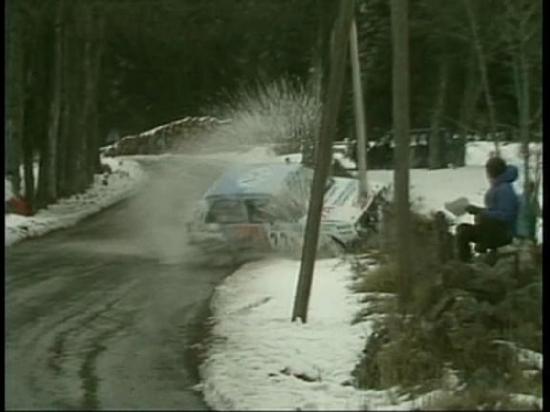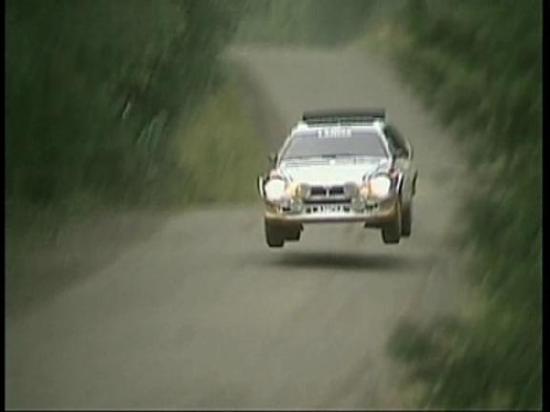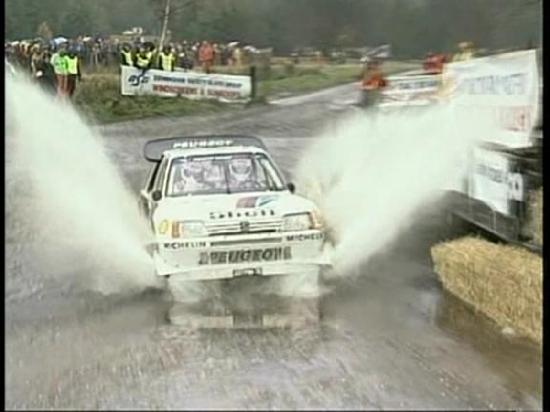World Rally Championship 1985-89
Introduction
The World Rally Championship is one of the greatest challenges of man and machine. Running all year round on gravel, snow and tarmac across 15 countries on four continents: Europe, Africa, Australasia and South America.
1985 saw some of the biggest investments ever in rallysport from several of the world's leading manufacturers: Audi Quattros - the first of the 'supercars', Peugeot with their new 4WD lightweight flyer and Lancia with the effective Delta S4.
The 1986 World Rally marked the end of an era in international rallying. An era in which the cars progressed from modified versions of ordinary saloons to turbocharged 'supercars' as dangerous as they were spectacular to watch. With the technical advances edging the sport even nearer to the limits of safety, the rally season was distinguished by tragedy at the loss of Henri Toivonen, co-driver Sergio Gresto and three spectators.
From the snow-laden roads of Monte Carlo to the dusty tracks of Spain, the 1987 World Rally Championship provided entertainment to rival any previous race series. Lancia were favourites but BMW, Mazda and Audi were intent on blocking runaway success for the Italian marque. Not until the very last round of the RAC Rally could you guess who would win, in what turned into a thrilling season finale.
In 1988, the dominance of European manufacturers was challenged by an influx of superb cars from Japan. Although Lancia took both manufacturers' and drivers' titles, they were under serious threat from the Japanese built Toyota Celica GT4s and Mazda 323 4WDs. Nissan and Mitsubishi also made significant contributions to an intriguing season.
In 1989 Japanese teams took the rallying world by storm, sparking one of the most exciting series in rally history. The Italian camp had pinned their hopes on Lancia's new 16-valve Integrale in an attempt to counter the growing challenge from Japanese manufacturers Toyota, Mazda and Mitsubishi.
Video
All of these discs are NTSC R0 apart from 1985, which is PAL. The footage is excellent, as the cameras are in close proximity to the road and improves throughout, with the 1989 event including some in-car and aerial footage.
Audio
The commentaries are informed and well delivered, adding much to your understanding and enjoyment of the material. The race sounds come across well, from the loose-surface crunching to the furious engine revving.
Conclusion
I've never been a massive fan of the World Rally Championship, although it's always intrigued me - the speed and power of the vehicles, combined with the challenging road surfaces and dangerous conditions made me wonder "why?", but it's a question that answers itself.
I'd never appreciated the vast challenge that goes into setting up a car for high-speed racing on different surfaces and in different climates, never mind the drivers and their preparations.
This set covers the rise and fall of the infamous Group B cars, which were extraordinarily fast (0-60 in 2.3 seconds on gravel!) and handled incredibly well, though their fate was sealed in 1986 when, in two separate accidents, two drivers and three spectators died - some of the crowd are so close to the cars it's a wonder that more weren't killed.
If you were one of the millions who saw these races, or are even the slightest bit interested in rallying, there's much to enjoy in this box set, which is a slice of racing history.




Your Opinions and Comments
Be the first to post a comment!